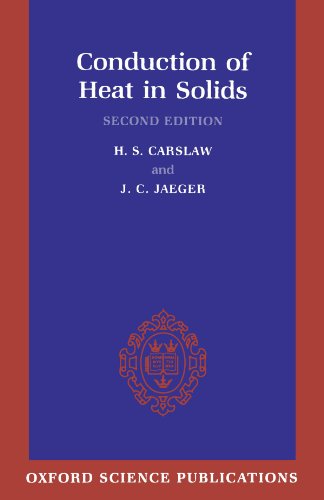Conduction of Heat in Solids pdf free
Par kroon paul le jeudi, novembre 3 2016, 04:26 - Lien permanent
Conduction of Heat in Solids. H. S. Carslaw, J. C. Jaeger

Conduction.of.Heat.in.Solids.pdf
ISBN: 0198533683,9780198533689 | 517 pages | 13 Mb

Conduction of Heat in Solids H. S. Carslaw, J. C. Jaeger
Publisher: Oxford University Press, USA
For example, a spoon in a cup of hot soup becomes warmer because the heat from the soup is conducted along the spoon. Conduction is the one of three types of heat transfer in which thermal energy transfers from one point to another through the interaction between the atoms or molecules of the matter. Convection and conduction are different because conduction transfers heat energy through direct contact in solids. I consulted for my work the book "heat conduction in solids" by H.S. Conduction heat transfer is found to be occurring commonly in solids in which the molecular movement is restricted when comparing with a liquid or gas. All conduction needs molecules so that the energy can be passes along. Introduction to the Mathematical Theory of the Conduction of Heat in Solids book download Download Introduction to the Mathematical Theory of the Conduction of Heat in Solids . Convection is heat transfer by the movement of liquids or gasses. Conduction is most effective in solids-but it can happen in fluids. Conduction Firefighter Conduction. The governing equation for heat transfer by conduction is: Conduction Equation. The book says at the introduction: "When different parts of a body are at different temperatures heat flows from the hotter parts to the cooler. Conduction Heat transfer always takes place by areas of high heat energy migrating to areas of. You may be able to do some useful scaling of cooling times without getting a full solution. The standard reference for analytical solutions is "Conduction of heat in solids", Carslaw & Jaeger, 1959. Conduction is heat transfer within solids or between contacting solids. And Jaeger, J.C., Conduction of Heat in Solids, 2nd ed., Clarendon Press, Oxford, England, section 3.3, p. Because molecules are farther apart in gases than in solids, the gases are much poorer conductors of heat.